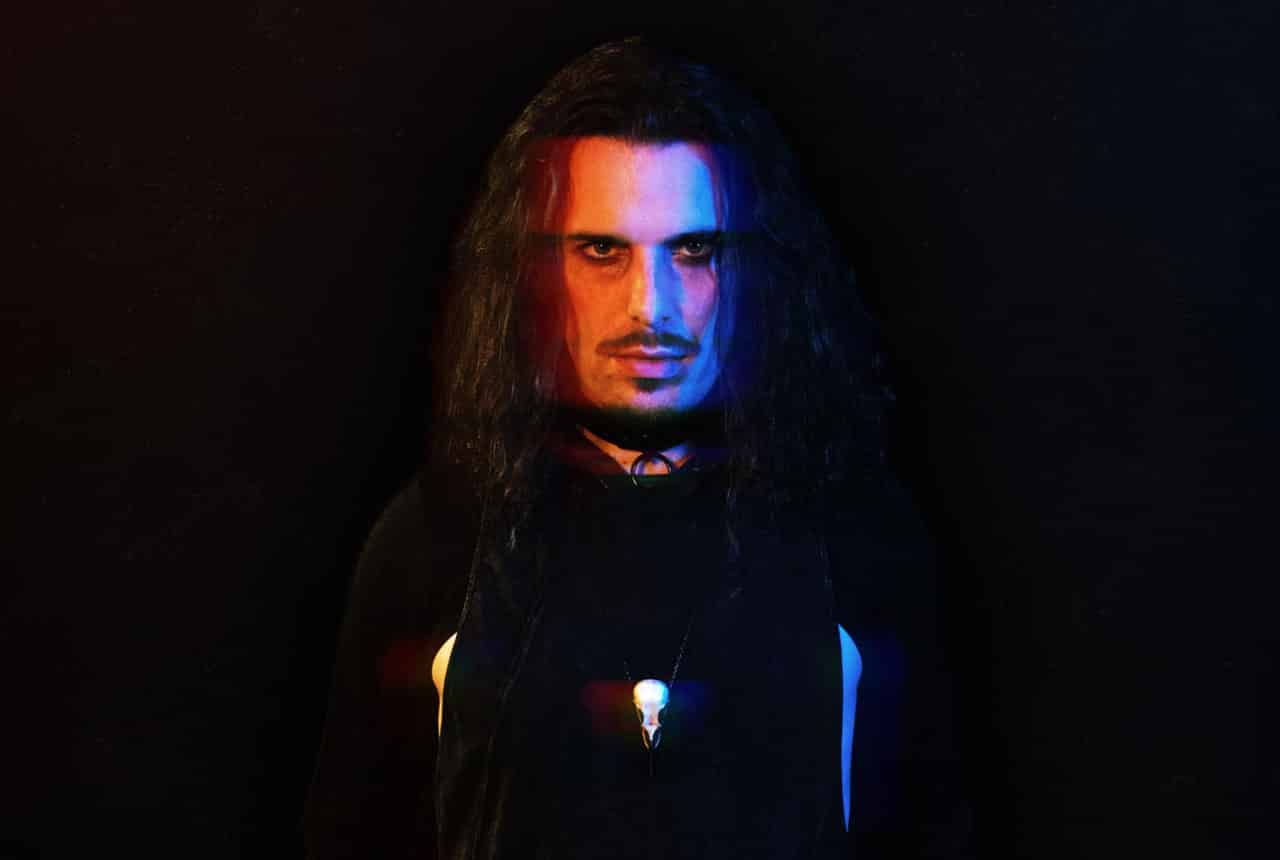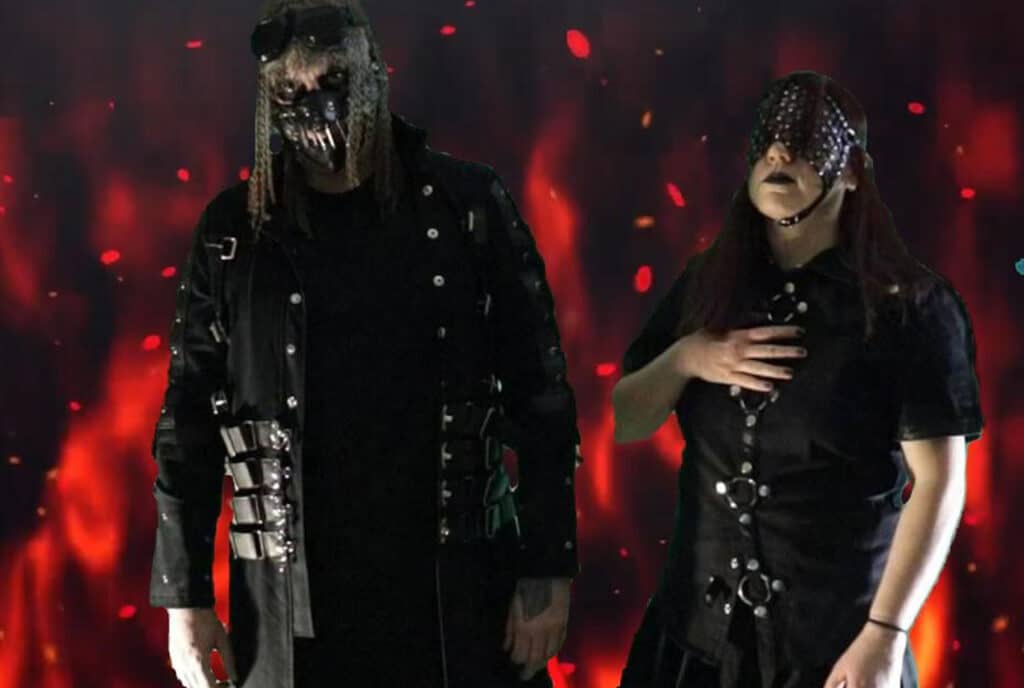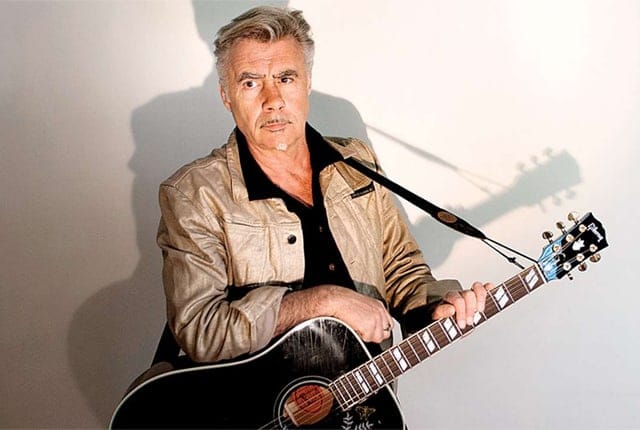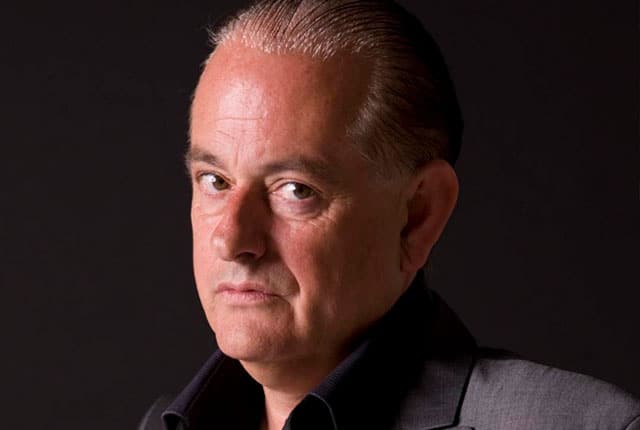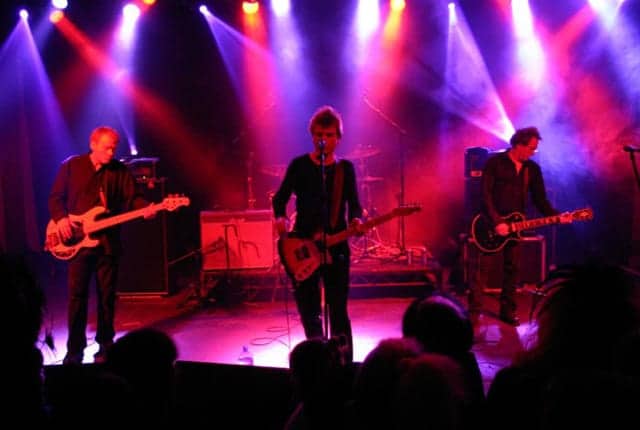Having previously focused on composition, sound design, and production for others, UK-based David Lawrie has turned his attention to his own musical project, The Royal Ritual. Martyrs, the recently released debut from The Royal Ritual, presents a dark electronic/industrial sound that also has strong melodic elements and integrates traditional world instruments. In an email interview, Lawrie discusses his background, the making of Martyrs, and the future.
You’ve previously released music under your own name – how did you come to start up The Royal Ritual? Did you set out to start something completely new, or did you realize the music you were working on should become its own project?
My first release under my birth-name was during my bachelor’s degree, and another two came out by the time I finished my Master’s degree. I was studying Music Production, and my goal was to become a record producer and composer. Whilst the instrumental arrangements and lyrics were deliberate and authentic, I knew that the main goal of these releases was to attract other artists and potential clients, rather than to appeal to a wider audience. Around 2012/2013 the solo work did start to attract the interest of more casual listeners, and I released Dorothea’s Boat in 2015. It was at that point that my work in film audio and composition started to really take over, and my solo work took something of a back seat.
A few years later, I decided that I really wanted to get back to writing music for music’s sake, but I also knew that I didn’t want it to be a vehicle for attracting clients. My experiences after living in the USA for (at that point) eight years had drastically changed my lyrical inspiration, and I had found myself returning to the heavier music that I enjoyed before I diversified into audio post production. Because it was to be quite far removed from my music and audio work as David Lawrie, I knew I wanted this new project to have its own identity.
Could you discuss the themes behind Martyrs?
Lyrically, the album revolves around religious dogma, and how I think that religion has a big hand in coaxing ordinarily good people to do bad things. My time in the USA amplified my hostility towards the church, and during the Covid-19 pandemic, the hypocrisy of the megachurch and evangelical community was staggering. Each song on the album is a different facet of the broad subject.
I should clarify that my hostility is not towards individual believers, but rather the institutions themselves.
Did you have a strong sense of the overall sound you were going for with the album? Are there any ways that it evolved or changed during its making?
The Royal Ritual started off as an experimentation with Dustin Schultz – an incredible composer and synthesist, currently living in the Bay Area of California, who is also performing with ohGr. It was a very exciting time, and although I can’t speak for him, I know that I certainly learned a lot from spending time in his creative space.
During the experimentations it became clear that synthesis and found-sound sampling would be very prominent (almost all of the drums and percussion on the album are crafted from various location recordings), but I also knew that I wanted to be able to incorporate some of the traditional world instruments I have consistently used in the past.
The pandemic saw it turn into a solo project, and that undoubtedly had an effect on the writing process. Whilst Dustin has an incredible analogue synthesis setup, my studio in California (where I lived at the time) was more set up for live-performance recording. With that being said, the synthesis on the album transitioned to a much more software based approach, and Sebastian at D16 was incredible in helping me explore the software instruments from that boutique company.
Because this was also a pandemic-era project, it was also afforded a lot of time to experiment with different approaches and techniques, and I feel like very few stones were left unturned. I’m very pleased with how it manifested.
How do you feel The Royal Ritual relates to your other musical, production, and sound design work? Are there things that it allows you an outlet for? Are there particular skills or techniques from your other work that you feel play a major role in this project?
I think, for sure, that the sound design and audio post production I have done for film/TV in the past has played a big role in shaping my approach to The Royal Ritual.
I have done a lot of underwater sound design and, contrary to what seems logical, actual hydrophonic recordings rarely yield desirable results. In order to develop my “signature” underwater sound, it took a lot of experimenting to land an immersive “alien” soundscape – one that feels as if it fits the visual, but also one that feels completely otherworldly. This abstract approach found its way into the creation of a lot of the percussive and soundscape elements of the album. I wanted to replace the traditional elements of the contemporary production with sampled instruments so that there is a sense of familiarity, at the same time as being unique (the snare drum, for example, is consistently a blend of real-world elements).
What was the timeframe for making the album? Were you completely focused on it, or working on other things at the time?
The album took about 18 months to mature from conception to completion, and I probably spent about half of that period working on the album, and the other half on various other sound design and music production projects. This was a completely independent undertaking. With me being the producer and engineer, along with having my own equipped studio, I was able to produce it with no financial outgoings, but I had to supplement it with professional work.
By the time the album was completed I still hadn’t decided on a name, nor a visual aesthetic. I spent the next five or six months developing that side of things before the video premiere of “Pews In A Pandemic” at Stay-in-Fest in August 2021.
It’s been a lot of additional work, and I’ve continued to work on other audio/music projects to supplement it, but gradually TRR is becoming a self-sustaining entity, and I am so grateful to be able to divert more and more energy to it!
You started working with London After Midnight a few years ago. How did that come about and what has the experience been like? Are you currently involved with the group?
I was originally asked to repair the digitised audio from the original tapes of Selected Scenes From The End Of The World in spring 2019. Matthew Setzer, who was the guitarist for the band at the time, was the one who made the introduction. A few months after the album was complete, but before it was released, Matthew left the band, and I think it was a case of me being involved at the time that I was asked to join.
Of course, we all know what happened at the start of 2020! That put back all live performances, so we decided to do a Live-From-Isolation performance. I mixed the audio, as well as editing the videos together, and it was featured on both Gothicat Festival and Stay-in-Fest 2021. The larger festival dates like Cruel World and Amphi Fest were postponed further, and in the interim I worked with Sean Brennan on Oddities Too, which was completed at the end of 2021, and is awaiting a release later this year.
Early this year I found myself concentrating more and more on The Royal Ritual, and with me having relocated back to England – my country of birth – I decided to step away from London After Midnight.
How big of a focus do you see The Royal Ritual being for you going forward? What are your future plans and long-term goals for the project?
The Royal Ritual is rapidly becoming my main focus, and I am very happy for that.
In the long run, I want to pour as much of myself into the project as possible, but I am always open to interesting commissions and collaborations. Music and audio is something of a compulsion for me, so I get quite fidgety if I am not actively working on something!
For more info, visit theroyalritual.com.
